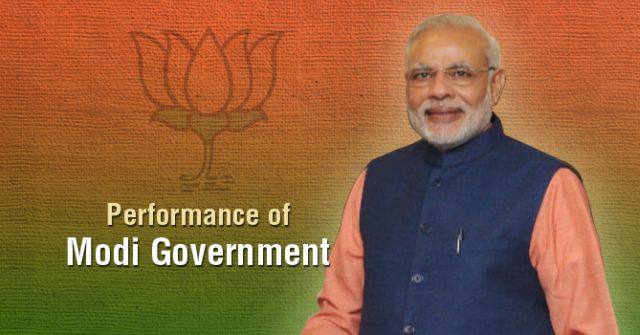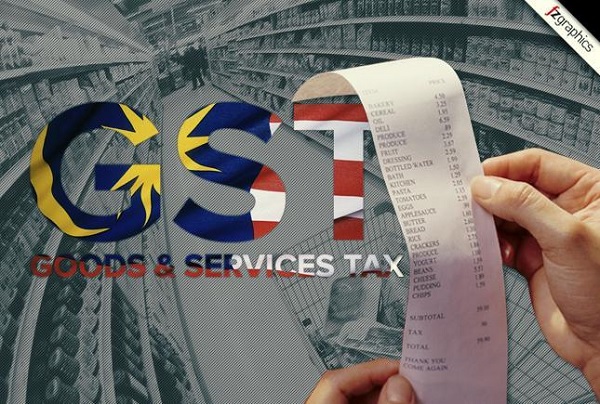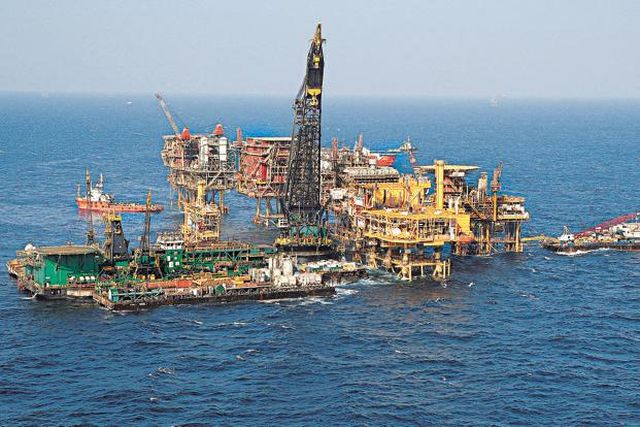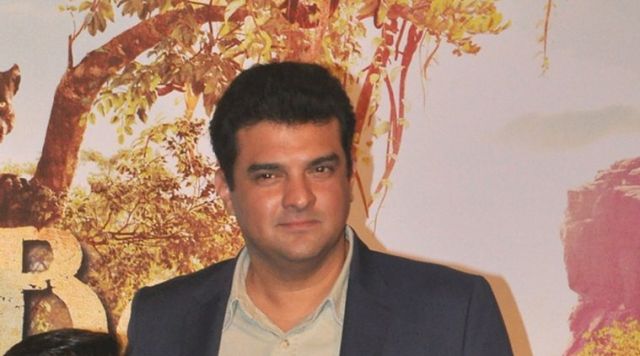
by admin | May 25, 2021 | Opinions
 By Amit Kapoor,
By Amit Kapoor,
Unlike most countries, the budget is usually an eventful affair in India and is a heated topic of national conversation around the time of its release. The underlying national interest behind it is mostly because the budget holds something for everyone — ranging from a small farmer to a big industrialist. However, from this year onwards, much of its sheen will be off by a bit.
The tinkering of indirect taxes, which was an aspect of the budget that affected everyone in all corners of the country, is not within the Centre’s domain anymore. Since the implementation of the Goods and Services Tax (GST), all indirect taxes — except for customs duty — have to be decided upon by the GST Council instead of being annually altered based on short-term political interests. Therefore, the first budget after the GST reform will be a challenging one for the government.
The fact that this will be the last full budget before the 2019 elections and that the government has already spent all of its budgeted expenditure for this financial year will further complicate matters. The oncoming elections affects the budget in multiple ways.
First, if the Gujarat election results are to be taken as indicative of the national sentiment, the BJP government is more popular in urban areas than it is in the countryside. The recently released CSO growth estimates show why. The farm and allied sector grew at 2.1 per cent in the current fiscal as compared to 4.9 per cent in the preceding year. So, the ailing agricultural sector will receive much-needed redressal in the upcoming budget. In fact, the Finance Minister has already confirmed this. Reviving growth in the sector can also be a viable mechanism for job creation — another economic aspect that the government will be looking to address with the budget.
Second, with the elections around the corner, firming up economic growth will be foremost on the government’s agenda. Investments have declined from 34.3 per cent of the GDP in 2011-12 to 27 per cent in 2016-17. They still do not seem to have picked up. First advanced estimates show that this has further fallen to 26.4 per cent in 2017-18. Estimates of the Centre for Monitoring Indian Economy (CMIE) show that new investment proposals are likely to amount to around Rs 8 trillion ($126 billion) in 2017-18, which would be merely 60 per cent of the new proposals made in 2016-17. This would also be the lowest since 2004-05.
The subdued investment activity has been a result of the twin balance sheet problem that is now two budgets old. Clearly, it has been a difficult dragon to slay. Hopefully, a resolution should be in sight when the Rs 1.35 trillion-bank recapitalisation plan comes into force. The budget will bring about more clarity on the specifics of the plan and how it will affect government finances.
Third, the government will be in a tight conundrum to balance the budget between going populist in an election season and sticking to the fiscal deficit target. It is almost certain that the government will breach the fiscal deficit target this year after revenue collection in the new tax regime is mostly turning out to be lower than expected, forcing the government to borrow an additional Rs 500 billion. This puts the government’s net borrowing at the highest level since 2013-14. Moreover, it needs to be pointed out that this figure does not include the Rs 800 billion meant for bank recapitalisation this fiscal.
Therefore, managing finances for the next fiscal will be a challenge considering the current scenario. The fact that the economy is not growing at full throttle is not helping either. The government will have to take a call on curbing its spending to maintain the deficit and sacrificing growth partly or splurge and maintain a higher deficit next year as well, risking inflation in the process. The elections make it enticing to choose the populist route and breach the fiscal ceiling. A case can be made that growth should be prioritised over maintaining the fiscal target, but reneging on the commitment will diminish the government’s credibility — which is more harmful in the long run. Rewiring the FRBM (Fiscal Responsibility and Budget Management) law to make it counter-cyclical in nature would be a better route to adopt.
All factors considered, this budget presents the biggest challenge to the Modi government since coming into power. Low growth numbers, subdued investment sentiment and a widening deficit when elections are around the corner leave a Herculean task at hand. The balance between populism and fiscal restraint will be difficult to manage. In any case, the document that will be taking the centrestage on February 1 will define the course for a lot of things to come.
(Amit Kapoor is chair, Institute for Competitiveness, India. The views expressed are personal. He can be contacted at amit.kapoor@competitiveness.in and tweets @kautiliya. Chirag Yadav, researcher at Institute for Competitiveness has contributed to the article)
—IANS

by admin | May 25, 2021 | Economy, Markets, News
 New Delhi : Noting that the GST anti-profiteering clause could lead to hardship, industry chamber Assocham on Sunday urged more clarity in rules to curb price hike arising from a rollout of the new indirect tax regime, saying tax authorities will need to be more sensitive to avoid undue harassment of assessees.
New Delhi : Noting that the GST anti-profiteering clause could lead to hardship, industry chamber Assocham on Sunday urged more clarity in rules to curb price hike arising from a rollout of the new indirect tax regime, saying tax authorities will need to be more sensitive to avoid undue harassment of assessees.
The industry body said in a statement here that there is concern about practical and procedural challenges emerging during the initial implementation period of the anti-profiteering clause under the Goods and Services Tax (GST) regime which was rolled out last July.
“With the National Anti-Profiteering Authority being established, the Confederation of Indian Industry (CII) has called for greater clarity in rules to curb price increase arising from GST,” it said.
“Practical implementation of the regulations without ambiguity and without untoward scrutiny is required, particularly in the initial days of implementation till the system stabilizes.”
Noting that the anti-profiteering clause was brought in to keep a check on unethical high profits, analyse long-term effects of GST, control price rise and retain consumer trust in the new tax regime, Assocham said the relevant rules say “benefit of input tax credit should have been passed on to the recipient by way of commensurate reduction in prices”.
“However, as this definition is not clear, discretionary bias may creep in,” the statement said.
CII noted that several factors contribute to pricing decisions, such as supply and demand conditions, as well as suppliers’ costs and taxes.
“The anti-profiteering clause of GST law should provide clarity on rules and regulations regarding assessment of valuation and impact of taxes,” it said.
“Tax authorities will need to be sensitive to natural business outcomes and avoid undue harassment. Also, the clause gives relatively less time for adoption of the new provisions. Manufacturers or suppliers may also deal in several products that are not distinguished in their accounting books, so that determining price margins for individual products will be difficult.
“Effective anti-profiteering provisions that are clear are needed to ensure GST provides tax benefits to consumers,” the statement added.
Maining the most radical reworking of the items within the GST four-slab tax structure in November, whereby all but 50 of over 1,200 items remained in the highest 28 per cent bracket, the GST Council, however, also withdrew the novel facility of input tax credit for restaurants as they had not passed on this benefit to consumers.
—IANS

by admin | May 25, 2021 | Economy, Markets, News, Politics
 New Delhi : Implementation of GST and subsequent slowdown in the manufacturing sector is expected to drag down India’s growth to 6.5 per cent in 2017-18, official data showed on Friday.
New Delhi : Implementation of GST and subsequent slowdown in the manufacturing sector is expected to drag down India’s growth to 6.5 per cent in 2017-18, official data showed on Friday.
India’s projected economic growth rate for 2017-18 will be lower than the 7.1 per cent achieved in 2016-17.
According to Chief Statistician T.C.A. Anant, the de-stocking disruption caused due to the GST implementation has impacted the full-year Gross Domestic Product (GDP) estimates.
The estimate of national income for 2017-18 released by the Central Statistics Office (CSO), the GDP at constant (2011-12) prices for 2017-18 is likely to attain a level of Rs 129.85 lakh crore.
“The growth in GDP during 2017-18 is estimated at 6.5 per cent as compared to the growth rate of 7.1 per cent in 2016-17,” the Ministry of Statistics & Programme Implementation said in its estimate of National Income for 2017-18.
Earlier, the country’s GDP growth for the second quarter of the current fiscal ended September 30 was 6.3 per cent — up from 5.7 per cent reported during the first quarter of 2017-18.
The CSO has primarily used seven-month data to extrapolate for the full fiscal.
As per the data, the Gross Value Added (GVA) at basic constant prices (2011-12) is anticipated to increase from Rs 111.85 lakh crore in 2016-17 to Rs 118.71 lakh crore in 2017-18.
“Anticipated growth of real GVA at basic prices in 2017-18 is 6.1 per cent as against 6.6 per cent in 2016-17.”
The data disclosed that sectors like ‘public administration, defence and other services’, ‘Trade, hotels, transport, communication and services related to broadcasting’, ‘electricity, gas, water supply and other utility services’ and ‘financial, real estate and professional services’ registered a growth rate of over 7 per cent.
On the other hand, growth in the ‘agriculture, forestry and fishing’, ‘mining and quarrying’, ‘manufacturing’ and ‘construction’ sectors “is estimated to be 2.1 per cent (from 4.9 per cent), 2.9 per cent (from 1.8 per cent), 4.6 per cent (from 7.9 per cent) and 3.6 per cent (from 1.7 per cent)”, respectively.
—IANS

by admin | May 25, 2021 | Commodities, Commodities News, Corporate, Corporate Governance, Economy, Markets, News, Politics
 By Biswajit Choudhury,
By Biswajit Choudhury,
New Delhi : While the strategic petroleum sector, including oil and gas, continues to remain outside the new GST indirect tax regime that replaced a 70-year-old system, the industry did manage in 2017 to switch over to a new exploration regime that gives producers marketing and pricing freedom.
The petroleum industry has been pushing for its inclusion in the Goods and Services Tax (GST) structure so as not to be deprived of the benefits of input credit — a novel feature whereby goods and service providers get the benefit of input tax credit for the goods used, effectively making the real incidence of taxation lower than the headline rate.
The Centre is keen to bring under GST products like petrol and diesel that generate considerable reveue for the states, which they are loathe to surrender. Finance Minister Arun Jaitley provided this remarkable insight about the functioning of the Council that he heads.
“Everything has been achieved by consensus in the best spirit of cooperative federalism. There has been no politics, even from states which are controlled by opposition parties,” he told a gathering of industry leaders here.
During the course of the year on the other hand, India conducted its first auctions and, consequently, awarded the first licences for hydrocarbons exploration under a new revenue-sharing model, as opposed to the previous profit-sharing one, and the successful bidders had complete marketing and pricing freedom.
In the early part of the year, the government approved 31 contracts for exploration of small oil and gas contract areas under the Discovered Small Fields (DSF) Bid Round. As many as 46 contract areas designated for 67 discovered small fields across nine sedimentary basins were on offer, bids for which came in from majors like Cairn India and Hindustan Oil Exploration Co, along with from five smaller foreign firms.
The auction was held under the new Hydrocarbon Exploration and Licensing Policy (HELP) approved last year to replace the controversial production-sharing contracts (PSC) that had governed the bidding in nine earlier New Exploration Licensing Policy (NELP) rounds.
The PSC regime, which allows operators to recover all investments made from sale of oil and gas before profits are shared with the government, was criticised by India’s official auditor, who said it encouraged companies to keep inflating costs to postpone the sharing of profits.
The Open Acreage Licensing Policy (OALP) launched by the government in July allowed oil and gas companies to select exploration blocks on their own, without waiting for a formal bid round from the government. It replaced the old system of the government carving out areas for bidding them out.
As a necessary complement to the OALP, the country’s first national data repository (NDR) was also launched which allows explorers to access seismic data on the sedimentary basin before making their bids.
As many as 51 proposals seeking around 60,000 sq km of area for oil and gas exploration have been bid for in the maiden auction under the OALP, bidding for which is slated to be held twice a year.
“In the new model, the government will not micromanage, micro monitor with producers. Government will only share revenue,” Petroleum Minister Dharmendra Pradhan said while announcing the OALP. The bidder offering the maximum share of oil or gas produced from the selected area would be awarded the block.
India’s domestic crude oil production of 36.95 million tonnes in 2015-16 barely met 20 per cent of its oil needs. Natural gas output at 32.249 billion cubic metres meets less than half of its needs.
The reforms in the sector in a bid to raise output comes in the current difficult context for the global oil industry caused by crude prices falling sharply from the highs of over $120 a barrel that prevailed two years ago.
Which leads to the other story of the year, whereby oil regained the $60 a barrel level, from lows of around $25, after the Organisation of the Petroleum Exporting Countries (OPEC), along with non-OPEC producers, put in place output cuts from January 1 to counter the fall in prices caused by a supply glut.
With prices hardening, India’s oil imports during October shot up by 27.89 per cent to $9.29 billion, from $7.26 billion in the same month last year. It forced the government to cut excise duty on transport fuels by Rs 2 a litre after the petrol price had progressively risen to over Rs 79 per litre in Mumbai, recording the highest since the coming of the Modi government.
In the major corporate move of the year in the sector in June, Reliance Industries and British energy major BP annnouced the creation of a joint venture energy vertical to work across the entire value chain, involving investment of $6 billion, or Rs 40,000 crore. This would also develop their existing deep-water gas fields in India’s eastern offshore to bring to fresh production of one billion cubic feet per day by 2022.
(Biswajit Choudhury can be reached at biswajit.c@ians.in)
—IANS

by admin | May 25, 2021 | Interviews

Siddharth Roy Kapur
By Radhika Bhirani,
New Delhi : The Goods and Services Tax (GST), implemented by the central government from mid-2017, has proved to be a strain on the overall economics of film-making and is also discouraging the public’s cinema-going habit, says Film and Television Producers Guild of India President Siddharth Roy Kapur.
The year 2017 threw up surprises at the Bollywood box office — with a dubbed film like “Baahubali 2: The Conclusion” creating a storm by minting Rs 500 crore-plus — and shockers too, with Shah Rukh Khan and Salman Khan’s “Jab Harry Met Sejal” and “Tubelight”, respectively, falling flat.
How did demonetisation, announced on November 8, 2016, and GST impact Bollywood’s business in 2017?
“It’s still early to say as far as GST goes, but it definitely is a strain on the overall economics of film-making because of the fact that there isn’t a complete pass-through for the set-off, due to differential tax rates at various stages of the value chain.
“Secondly, because of the tax of 28 per cent on cinema tickets above Rs 100, which comprises the bulk of the cinema tickets sold in the country, the cinema-going habit is being discouraged. This really does put a massive strain on the economics of film-making,” Kapur told IANS in an email interview.
Tickets below Rs 100 attract GST of 18 per cent.
“We hope that the government recognises the contribution of Indian cinema… in driving the soft power of the nation, something which can actually propel us into the cultural fabric of the globe, and incentivises the industry accordingly,” he added.
Demonetisation, as part of which Rs 500 and Rs 1,000 notes were scrapped to counter black money, hasn’t impacted the film world much, says Kapur.
“This industry has been virtually free of cash dealings for over a decade now. So the film industry, contrary to popular notion, is one of the cleanest industries in the country. Demonetisation didn’t really affect us to that extent.
“At the box office, it had a temporary impact at the time that it was announced, but then we released ‘Dangal’ within less than two months after demonetisation and it was the biggest Hindi film of all time till then. So, that goes to show that people still want to watch movies. We just need to make it easier for them to do so,” affirmed Kapur, the former head honcho of Studios, Disney UTV.
As a producer who is now making movies under his banner Roy Kapur Films (RKF), he finds the Hindi-dubbed version of southern fantasy drama “Baahubali” has been a game-changer.
There has been a slump in profitable Bollywood originals and the answer, Kapur said, lies in “better stories and better scripts”. “We really need to be able to focus on great writing. From great writing will come great movies.”
What about the fate of films that ride on star power?
“Star power is something that has always existed and will continue to exist, but the fact is that no star can guarantee a long run for a film.
“If the star is in a film that the audiences are not used to watching them in, the opening might be lower, but ironically that film might go on to do even better business if the film is good. Correspondingly, if the star is in a typical film that stars are expected to be in, it might open huge; but if the film is not good it will finally peter out.
“So, stars can get you that guaranteed opening in genres that they are known and loved for, but they can’t ensure the longevity of the run of the film. That’s the magic of cinema.”
At RKF, Kapur is looking forward to producing a biopic on astronaut Rakesh Sharma, as well as Nitesh Tiwari’s next film based on the bestseller “How I Braved Anu Aunty and Co-Founded a Million Dollar Company”. There’s R.S. Prasanna’s next, which is currently in the writing stage, and a film based on the true story of Vijendra Singh Rathore — the heroic Alwar-based truck driver who found his wife after a 19-month-long search in the aftermath of the Uttarakhand flash floods.
Kapur is also backing director Vinil Mathew and writer Sudip Sharma’s next dramatic thriller inspired by the true story of merchant navy officer Audumbar Bhoi, whose ship and crew were attacked by Somalian pirates.
Apart from producing films, RKF will also venture into digital media via a partnership with Reliance Jio to produce original video content, including digital series and Made-for-Jio films for the platform’s subscribers across India.
“We look forward to how the digital medium interfaces with the creative community and what emerges from that because it’s a very exciting time for content creators.”
(Radhika Bhirani can be contacted at radhika.b@ians.in )
—IANS




